Visit The Charlottenburg Palace To Explore The Royal Residence Of Berlin In 2026
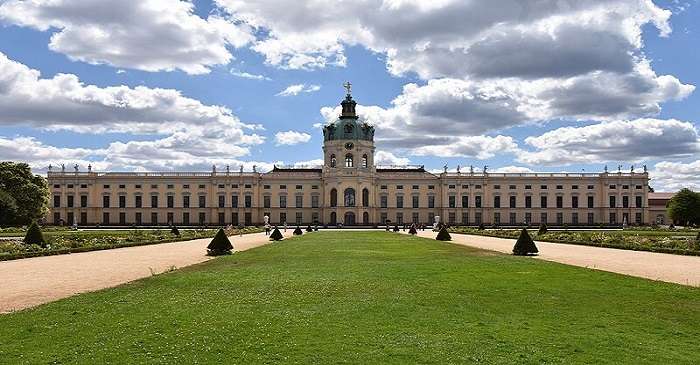
Located in Berlin, Charlottenburg Palace represents Prussia’s regal history. This majestic Baroque masterpiece, named after Sophie Charlotte, the first Queen consort of Prussia, has captivated visitors for centuries. Built in the late 17th century, the palace has weathered wars, renovations, and the changing tides of German history. Its opulent interiors, manicured gardens, and priceless art collections offer a glimpse into the lavish lifestyles of Prussian royalty. From the grand Porcelain Cabinet to the serene Belvedere Tea House, Charlottenburg Palace invites modern-day visitors to step back in time and experience the grandeur of a bygone era.
About The Charlottenburg Palace
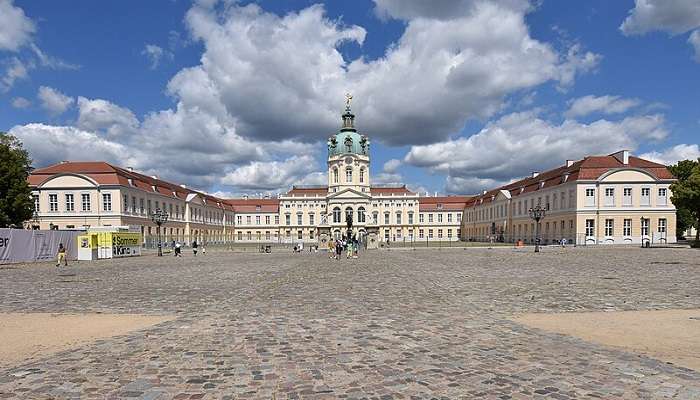
Charlottenburg Palace, or Schloss Charlottenburg, is a magnificent Baroque palace in the Charlottenburg district of Berlin. It was constructed at the end of the seventeenth century and enlarged in the eighteenth century; it boasts rich Baroque and Rococo interiors.
The palace is enclosed by a vast stately garden, which houses a belvedere, mausoleum, theatre and pavilion. The palace also experienced considerable damage during the Second World War, but it has been rebuilt and is one of today’s most significant tourist attractions.
Also Read: Haunted Places In Munich
History Of Charlottenburg Palace
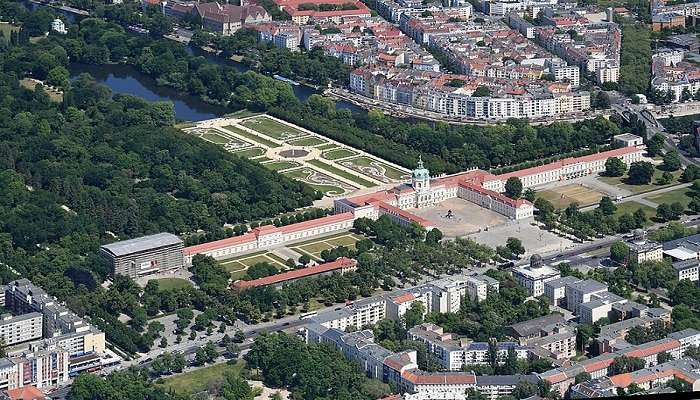
Charlottenburg Palace is situated in Berlin, Germany and was built in 1695 by Sophie Charlotte, wife of Frederick III of Brandenburg. Formerly called Lietzenburg, the palace was constructed in the Baroque style by Johann Arnold Nering. The palace was renamed Charlottenburg in favour of Sophie Charlotte after she died in 1705. More extensive enlargements were made by architect Eosander von Göthe, who built massive side aisles and a domed cupola reminiscent of the Palace of Versailles.
During the 18th century, the palace was enriched with elegant stucco work and gilding and had the famous Amber Room. During Frederick William II’s reign, the gardens were changed into English landscape gardens. The palace was heavily bombed during the Second World War, though it was rebuilt later to its glory. Today, Charlottenburg Palace is one of the major cultural sights that reveal the luxury of the Prussian Royal Family.
Highlights Of The Charlottenburg Palace
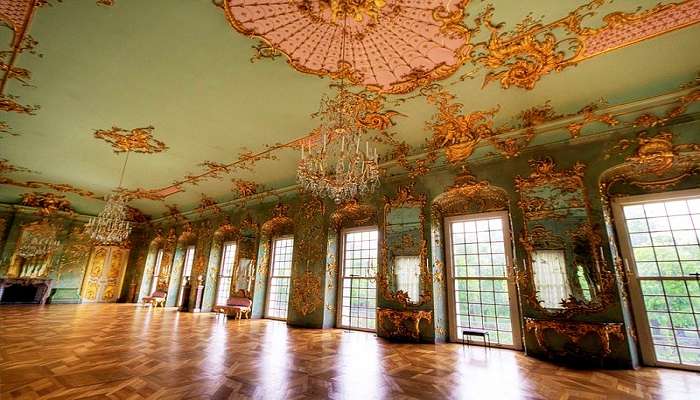
Charlottenburg Palace in Berlin is a magnificent historical site with many attractions. Here are some highlights:
Porcelain Cabinet: This cabinet is situated in the Old Palace and contains one of the oldest and biggest collections of porcelain of this kind. Although many pieces were destroyed during WWII, 2700 pieces remain today and are arranged with gold frames; the furniture is in the Chinoiserie style of the 18th century.
Golden Gallery: This ornate ballroom in the New Wing is beautifully restored and features glass cases with priceless porcelain and other treasures. It’s a breathtaking space that reflects the luxury of the era.
Baroque Parade Rooms: The king and queen conducted official business and public audiences in these rooms. They are the most abundant in the palace and have exquisite decorations and furnishings.
Palace Garden and Park: Designed by French landscape architect Siméon Godeau, this extensive park includes official buildings, playgrounds, and patches of woods. In warmer months, sheep graze on the lawns, making it a perfect place for a stroll.
Mausoleum: Built by King Friedrich Wilhelm III for his wife, Queen Louise, this mausoleum is near the garden. It houses her massive sarcophagus and the burial sites of other royals, though the crypt below is not open to the public.
Belvedere Tea House: Adjacent to the Spree River, this “tea house” is now home to the world’s most extensive assortment of porcelain from the German Königlichen Porzellan-Manufaktur Berlin (KPM). It is a lovely place with a long history.
Related Post: Museums In Munich
Opening Hours And Entrance Fees

Charlottenburg Palace in Berlin is open from Tuesday to Sunday, with varying hours depending on the season. From April to October, the palace is open from 10 AM to 5:30 PM, while from November to March, it operates from 10 AM to 4:30 PM.
Entrance fees are €12 for adults and €8 for students for both the Old Palace and the New Wing. The palace gardens, however, are free to visit, offering a beautiful outdoor experience without any cost.
Best Places To Visit Nearby Charlottenburg Palace
Charlottenburg Palace is surrounded by several fascinating attractions worth exploring. Below are some of the best places to visit nearby:
1. Berlin Zoological Garden
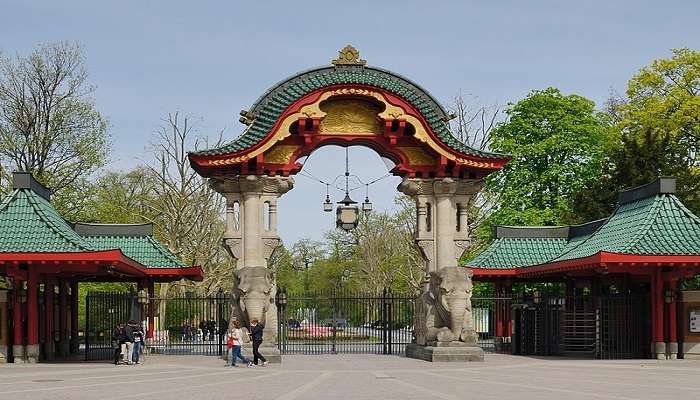
The Berlin Zoological Garden, commonly known as Zoo Berlin, is one of the oldest and most famous zoos in the world. It is also one of the oldest and most popular zoos in Germany, providing a unique opportunity for both children and adults to get acquainted with animals. The zoo is home to over 20,000 animals of 1,380 species, making it a perfect place for animal lovers.
The zoo houses many animals, from the giants of the jungle, such as elephants, to cute animals, such as penguins, reptiles, and insects. Some of them include the Hippo House, Penguin World, Aquarium Berlin, and the World of Birds, where visitors can have different experiences with different groups of animals. This has been made clear by the breeding programs of endangered animals and the awareness created by the zoo on animals and their natural environment.
Location: Hardenbergpl. 8, 10787 Berlin, Germany
Travel Time: 11 minutes
Related Post: Hindu Temples In Germany
2. Kaiser Wilhelm Memorial Church
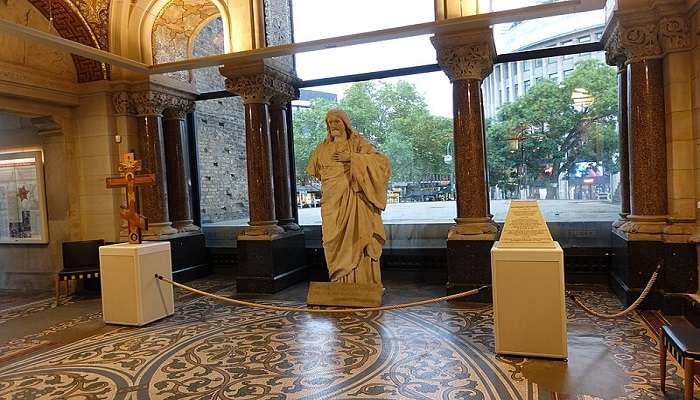
The Kaiser Wilhelm Memorial Church is one of the symbols of the past of Berlin, filled with various tragedies. This building was built in Neo-Romanesque style in 1891 – 1895; however, it was heavily damaged due to the World War II bombings. The only part of the castle left was the western tower, which spoke of the devastation of war. In 1957, a new church was constructed right next to the remains of the old one, which created a rather unusual contrast. The new church is more modern and is made of a glass structure that is in sharp contrast to the blackened ruins of the old church building.
Nowadays, the Kaiser Wilhelm Memorial Church is a significant sightseeing attraction showing Berlin’s history and architecture. Tourists can visit the remains of the old church and the tower, where they can get a bird s-eye view of the city and worship in the new church. Also, the church provides exhibitions, concerts, and other cultural shows during the year. The memorial church is a must-visit for anybody who wants to glimpse what Berlin used to be and what it is today.
Location: Breitscheidplatz, 10789 Berlin, Germany
Travel Time: 11 minutes
3. Berggruen Museum
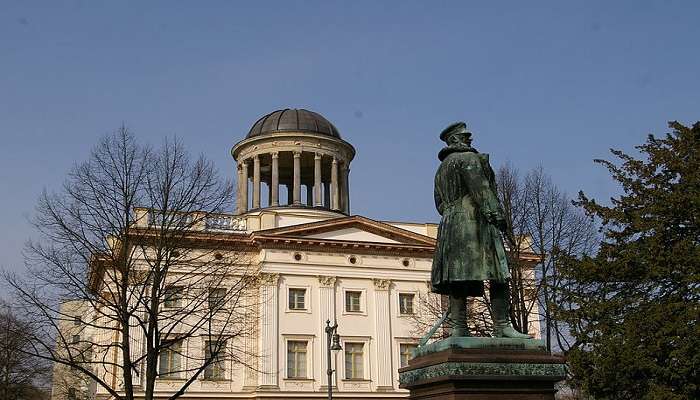
The Berggruen Museum is a treasure trove of modern art. It houses an impressive collection of works by legendary artists like Pablo Picasso, Paul Klee, Henri Matisse, and Alberto Giacometti. The museum’s origins can be traced to the art dealer and collector Heinz Berggruen, who donated his extensive collection to Berlin. The museum’s architecture, a historic guard barracks designed by Friedrich August Stüler, provides a stunning backdrop for the collection.
Visitors to the Berggruen Museum can explore Picasso’s diverse works, from his early Blue and Rose periods to his later Cubist and Abstract phases. The museum also showcases the whimsical and playful works of Paul Klee, the vibrant colours of Henri Matisse, and the elongated sculptures of Alberto Giacometti. Beyond the permanent collection, the museum often hosts special exhibitions featuring works from other renowned artists or exploring specific themes within modern art.
Location: Schloßstraße 1, 14059 Berlin, Germany
Travel Time: 2 Minutes
Related Post: Munich Lakes
Best Time To Visit
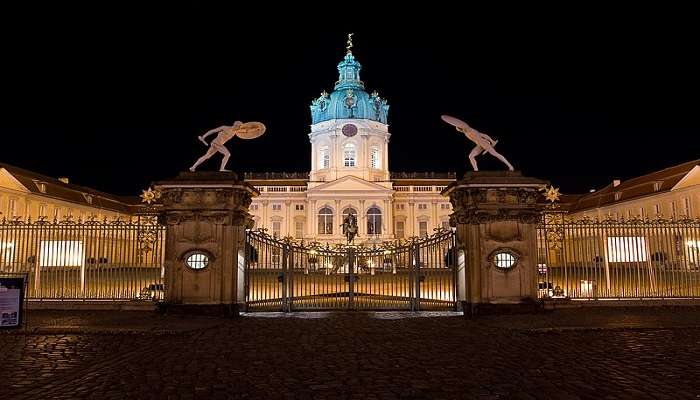
It is advisable to visit Charlottenburg Palace during the summer or early fall, when the weather is warm but not wet. This period gives visitors a comprehensive view of the palace and the large garden.
It is accessible throughout the year, though most of the structures within the compound are shut from October to April because of ongoing renovation projects. However, visiting the palace in winter is still recommended because, in December, it opens one of the most famous Christmas markets in Berlin.
How To Reach

Charlottenburg Palace, one of the most beautiful sights in Berlin, can be reached by different means of transport. Below is a detailed way on how to reach this historic site:
By Air
Travel to Berlin Brandenburg Airport (BER), which is the main international airport in Berlin. It will take 30-40 minutes to get to Charlottenburg Palace by taxi if you come from the airport. You can also use public transport and take the FEX train to Berlin Hauptbahnhof (Central Station), then follow the directions on the rail or bus below.
By Rail
If you are arriving at Berlin Hauptbahnhof (Central Station), you can take the S-Bahn suburban train lines S41, S42 (Circle line) or S46 and get off at Westend station. From there, it is just a few steps to the palace. The third option is to go by underground train U7 to the stations Richard-Wagner-Platz or Sophie-Charlotte-Platz, as both of them are situated near the palace.
By Bus
There are many bus services available, and most of the bus routes are near the palace. You can take bus 109, 309 or M45 and alight at the Luisenplatz / Schloss Charlottenburg station. If you are coming from Alexanderplatz, take the U-Bahn U2 to U Sophie-Charlotte-Platz, then take bus 309 and go three stops to Schloss Charlottenburg.
You May Also Like To Read: Munich In January
From its opulent interiors to its meticulously manicured gardens, Charlottenburg Palace offers visitors a glimpse into the grandeur of Prussian royalty. Whether you’re admiring the furnishings, strolling through the picturesque park, or marvelling at the exquisite art collections, Charlottenburg Palace will leave a lasting impression. Take the chance to experience this cultural gem firsthand. Ready to immerse yourself in Germany’s regal past? Book your trip to Europe today and make Charlottenburg Palace a highlight of your Berlin adventure. Your royal experience awaits!
For our editorial codes of conduct and copyright disclaimer, please click here.
Cover Image Credit :Michael.F.H.Barth for Wikimedia Commons
Frequently Asked Questions About Charlottenburg Palace
Why is Charlottenburg Palace famous?
Charlottenburg Palace is renowned for its stunning baroque and rococo architecture, expansive gardens, and historical significance as Berlin's largest palace. Originally constructed for Queen Sophie Charlotte, it showcases the luxury of Prussian royalty.
Why Should One Visit Charlottenburg Palace?
Charlottenburg Palace is a must-visit place due to its exquisite architecture, beautifully landscaped gardens, and rich history. It offers an insightful glimpse into the lavish lifestyle of Prussian royalty, making it a cultural highlight in Berlin.
Can you go inside Charlottenburg Palace?
Yes, visitors can explore the interior of Charlottenburg Palace, including the Old Palace and the New Wing. These areas house various exhibitions and historical artefacts, allowing guests to experience the palace's rich history firsthand.
Who is buried at Charlottenburg Palace?
The mausoleum at Charlottenburg Palace is the final resting place of Queen Louise, her husband Friedrich Wilhelm III, and their son. This site serves as a significant historical landmark within the palace grounds.
How much does it cost to visit Charlottenburg Palace?
Admission to Charlottenburg Palace costs €12 for adults and €8 for students. A combined ticket for the palace and other buildings is available for €15 for adults and €11 for students, providing great value for visitors.
People Also Read:
Mandir Palace Jaisalmer Narayanhiti Palace Museum Padmanabhapuram Palace

With a passion for travelling, and carving beautiful stories of stunning locations I chose my profession as a content writer. The unique blend of creativity and strategy ensures that each narrative takes readers on a journey to their desired destination. With distinct locations and unique vibes, I strive to deliver captivating content that speaks to the hearts of readers.











